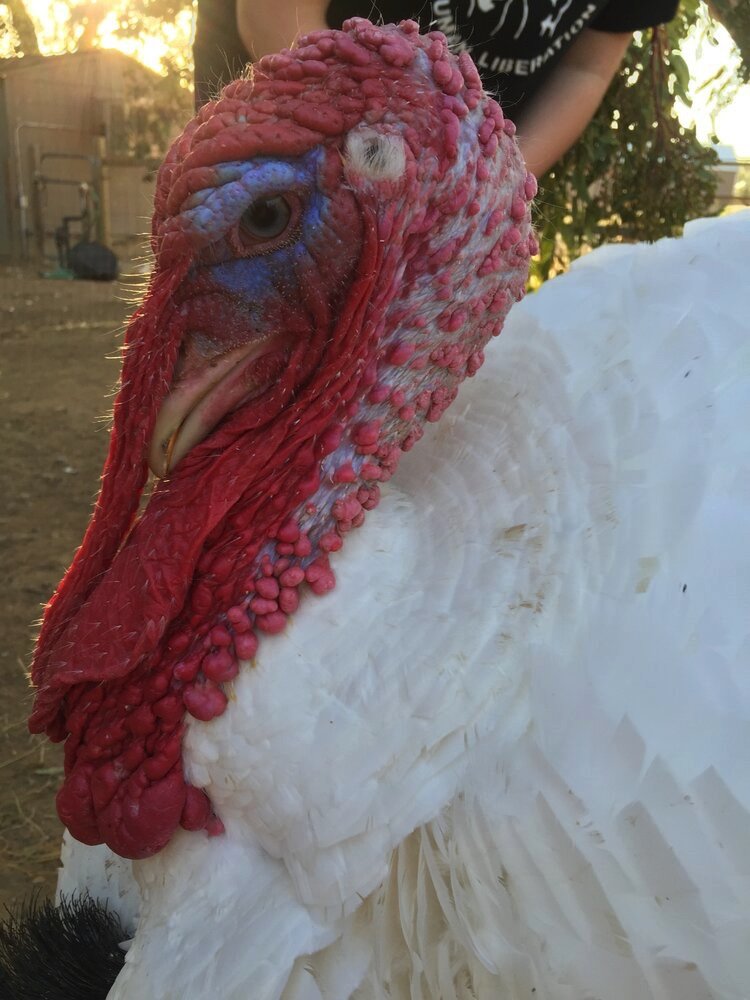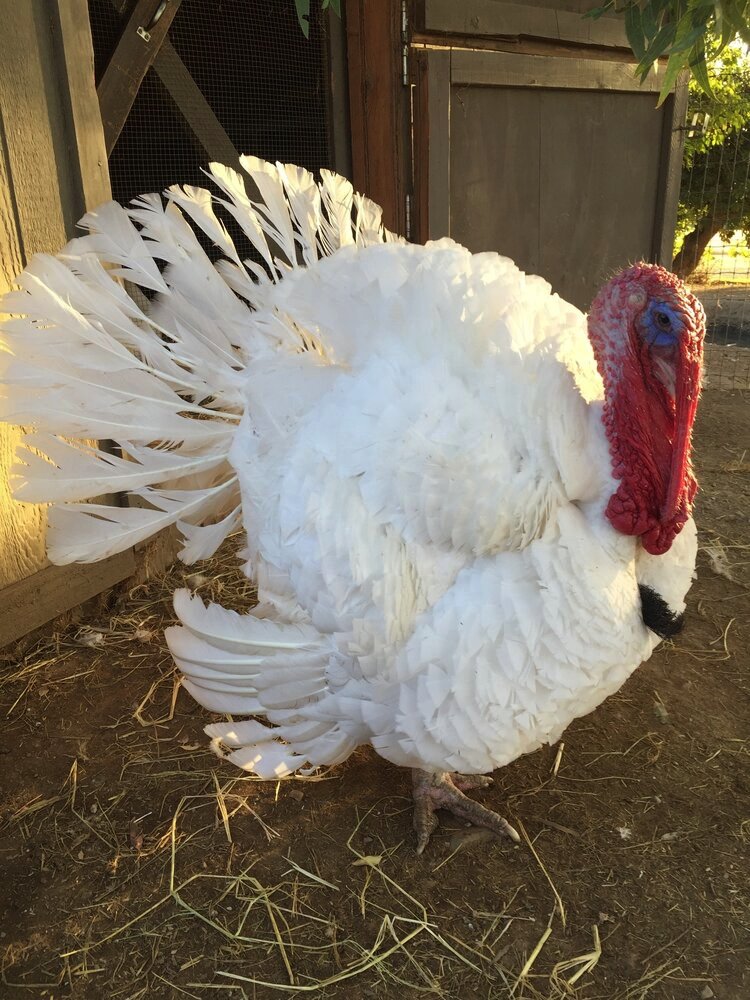Let’s Talk Turkeys
Henry
Since I was little whenever I heard “Thanksgiving”, a turkey came to mind. I even started referring to “the day” as “Turkey Day”, as if this was a day of celebrating turkeys??
Tibbott, and all his beauty
Turkeys are curious, clever, playful, affectionate, and family bonded. When content they purr and make pretty little sounds to show their affection or cuddle up next to a trusted friend and sit for hours. Male turkeys, Toms, have incredible plumage that make up a tail fan with many different colors. Their heads are magical like a mood ring, changing color with temperament. A turkey with a bright red head is feeling angry or aggressive, but when feeling excited or happy his head will turn blue. Female turkeys, Hens, are protective, loving mothers. When sitting on her eggs, she will not leave her nest for any reason, and once hatched, you have to get past mom in order to get to her little ones.
68 million turkeys are slaughtered each year in the United States during the holiday season alone.
Turkeys raised for human consumption are crowded into poorly ventilated industrial buildings, sometimes with as many as 15,000 birds packed into a single building, giving each turkey the space of a hand sized towel.
Commercial male turkeys are selectively bred to grow both as fast and big as possible. So, they are no longer able to naturally mate with a female. Therefore, all reproduction of domestic turkeys is done by artificial insemination.
CAFO Lifestyle
Due to the confined living space, at just days old, the ends of their beaks and toes are removed. Their beaks, much like our finger tips, are removed by using either a hot blade, shears, or electric current. The end of their toes being severed off with surgical shears. Both methods are routinely done with no pain reliever or anesthetic.
Due to the overcrowding and poor ventilation there are many health issues for turkeys and the human workers, including respiratory damage and irritated swollen eyes. One worker can be responsible for 30,000 birds, so injury and illness easily goes unnoticed.
At 3-4 months old, they are crated and shipped for slaughter, where due to rough handling, many injuries occur, including dislocated hips and wing fractures. Thousands of birds die during transport due to long distances of travel with a lack of food and water and extreme temperatures.
The Humane Methods of Slaughter Act requires animals to be rendered insensible before slaughter, but the USDA does not interpret the law to include birds killed for food, therefore; it does not protect turkeys. So, they are often rendered immobile, but not unconscious, so they remain awake and afraid.
Free-range, humanely-raised, pasture-raised, natural, organic…these are all labels sold to the unsuspecting public that are loosely regulated, at best, and do not mean what we all might suspect them to. Turkeys sold with these labels still suffer from many of the same industry practices as turkeys without these claims.
Henry
As we do, turkeys prefer to eat as a family and with their close friends. After dinner, if in nature, they would fly into a nearby tree where they all roost together for the night in safety.
Perhaps this is the year we make a choice to be more compassionate to all living beings, the planet, and ourselves by leaving turkeys off the table.









